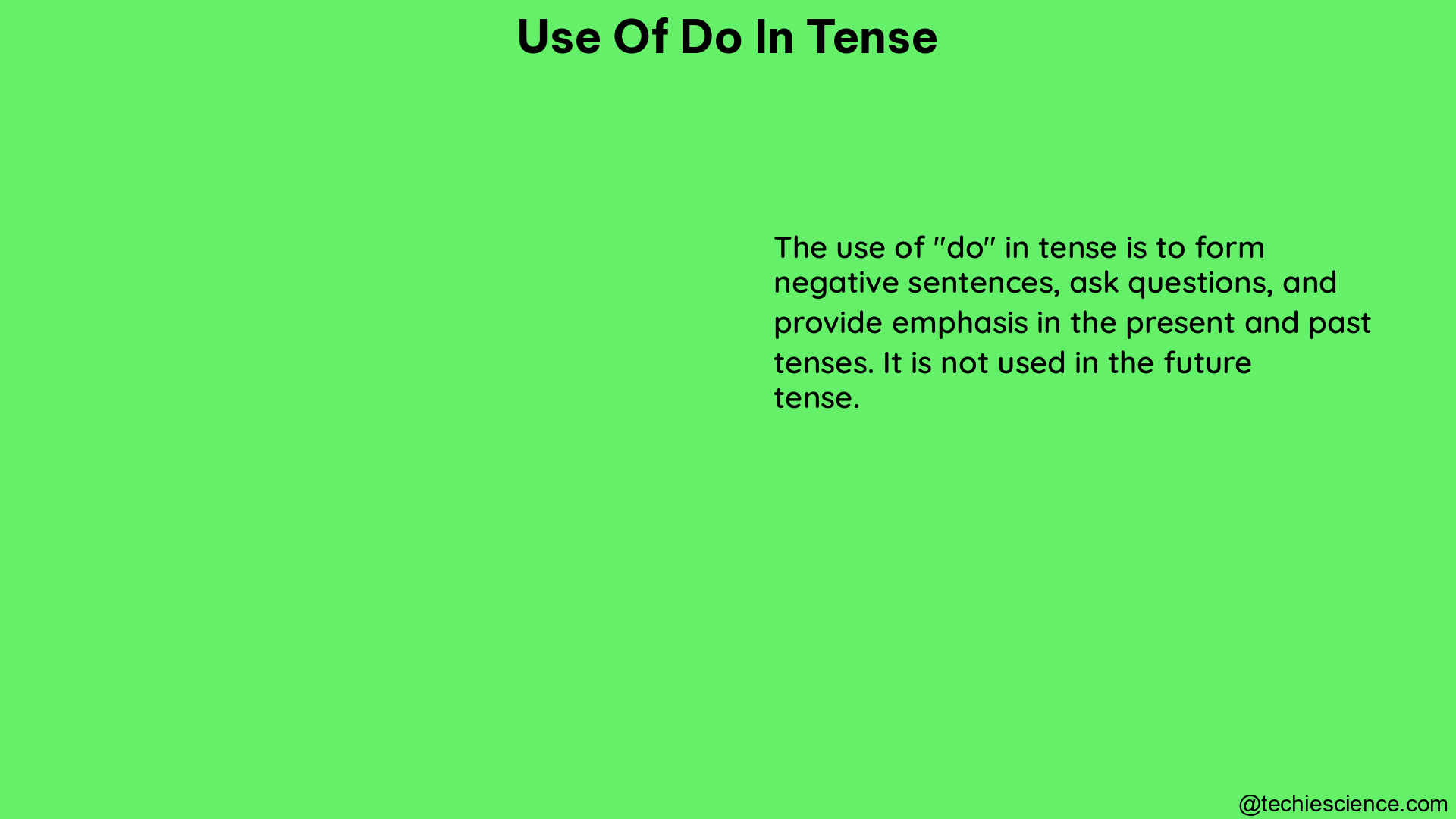The verb “do” is an essential part of the English language, and its usage can be a bit tricky for non-native speakers. This comprehensive guide will delve into the various forms of “do” and how to use them correctly in different tenses, providing you with a thorough understanding of this versatile verb.
The Forms of “Do”
The verb “do” has several forms that are used depending on the tense and the subject it is paired with. Let’s explore these forms in detail:
Present Tense
In the present tense, the forms of “do” are as follows:
- Do (base form): This form is used with the first person (I), second person (you), and third person plural (they).
- Example: I do my homework every day.
-
Example: They do their chores after school.
-
Does (third-person singular): This form is used with the third person singular (he, she, it).
- Example: He does his laundry on Sundays.
- Example: She does not like to cook.
Past Tense
In the past tense, the form of “do” is:
- Did (past tense): This form is used with all subjects.
- Example: I did my homework last night.
- Example: They did their best to help.
- Example: He did a great job on the project.
Past Participle
The past participle form of “do” is:
- Done (past participle): This form is used with the auxiliary verbs “to have” or “to be” in the correct tense.
- Example: I have done my homework.
- Example: The work has been done to the best of our ability.
- Example: The video will show you how it is done.
Using “Do” as an Auxiliary Verb

The verb “do” can also be used as an auxiliary verb in certain situations, such as:
Negative Sentences
To create negative sentences, we use the following forms of “do”:
- Do not (don’t)
- Does not (doesn’t)
- Did not (didn’t)
Example: I don’t like that movie.
Example: She doesn’t enjoy reading.
Example: They didn’t attend the event.
Question Forms
The forms of “do” are also used to create questions:
- Do
- Does
- Did
Example: Do you like my shirt?
Example: Does he drive to work?
Example: Did you enjoy your trip?
Emphasis
The forms of “do” can also be used to add emphasis to a sentence:
- Do
- Does
- Did
Example: I do like to exercise.
Example: Yes, the baby does cry often.
Example: I did enjoy the trip.
Additional Tips
Here are some additional tips to keep in mind when using “do” in tense:
Subject-Verb Agreement
- Do is used with the first person (I), second person (you), and third person plural (they).
- Does is used with the third person singular (he, she, it).
Spelling Tip
In the present simple third person (he, she, it), add an es to a verb that ends in ‘o’: do > does.
Conclusion
The verb “do” is a crucial part of the English language, and understanding its various forms and usage is essential for effective communication. By mastering the use of “do” in tense, you can elevate your English proficiency and confidently express yourself in a wide range of contexts.
References
- https://www.thesaurus.com/e/grammar/do-vs-does/
- https://languagetool.org/insights/post/grammar-forms-of-do/
- https://www.gingersoftware.com/content/grammar-rules/verbs/do-does-did
- https://www.grammar.cl/english/do-does-did-done.htm
- https://dictionary.cambridge.org/us/grammar/british-grammar/do

Hi…..I’m a graduate with a Bachelor’s degree in English Literature. I wish to do a Masters in the same field someday and continue my career in Academia.
Let’s connect through LinkedIn: